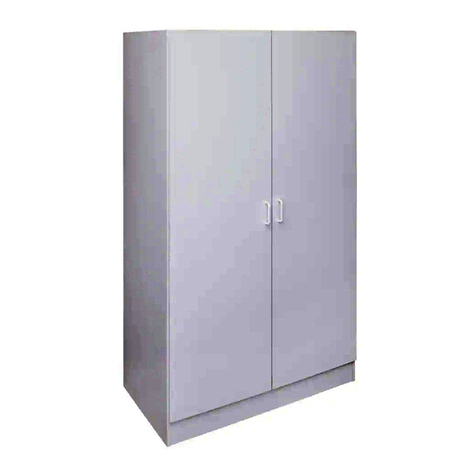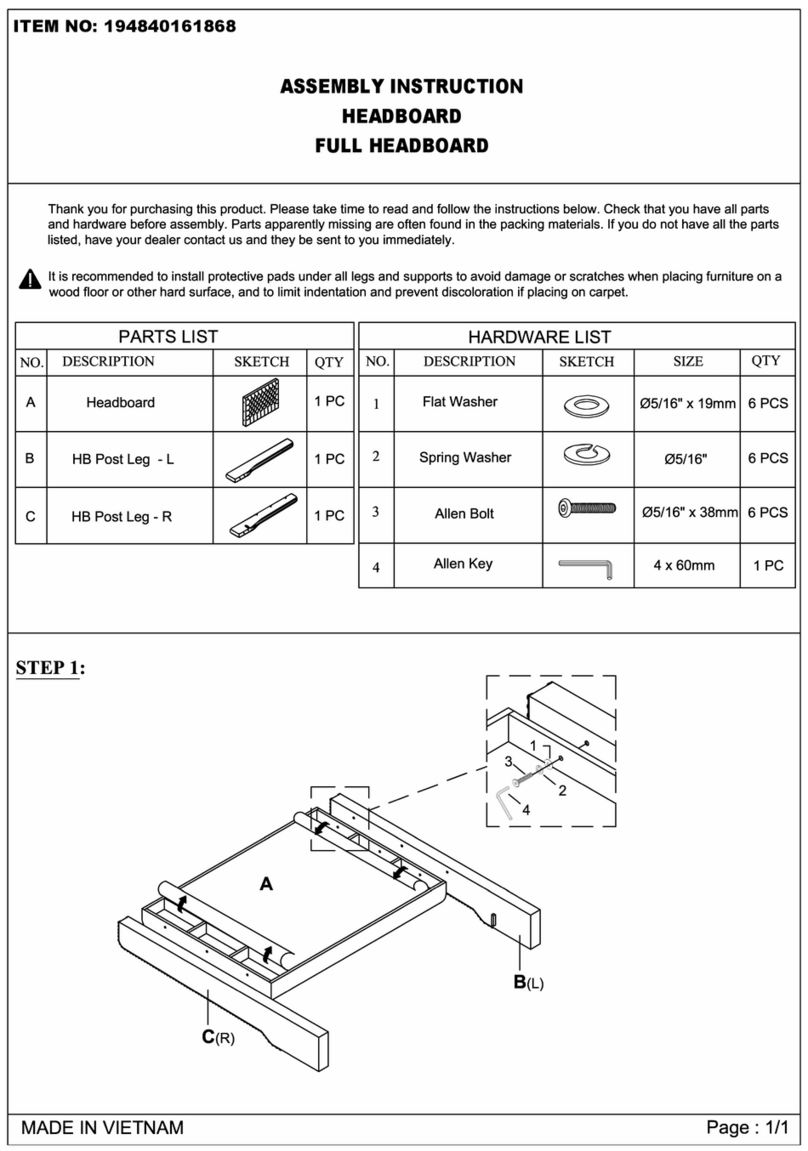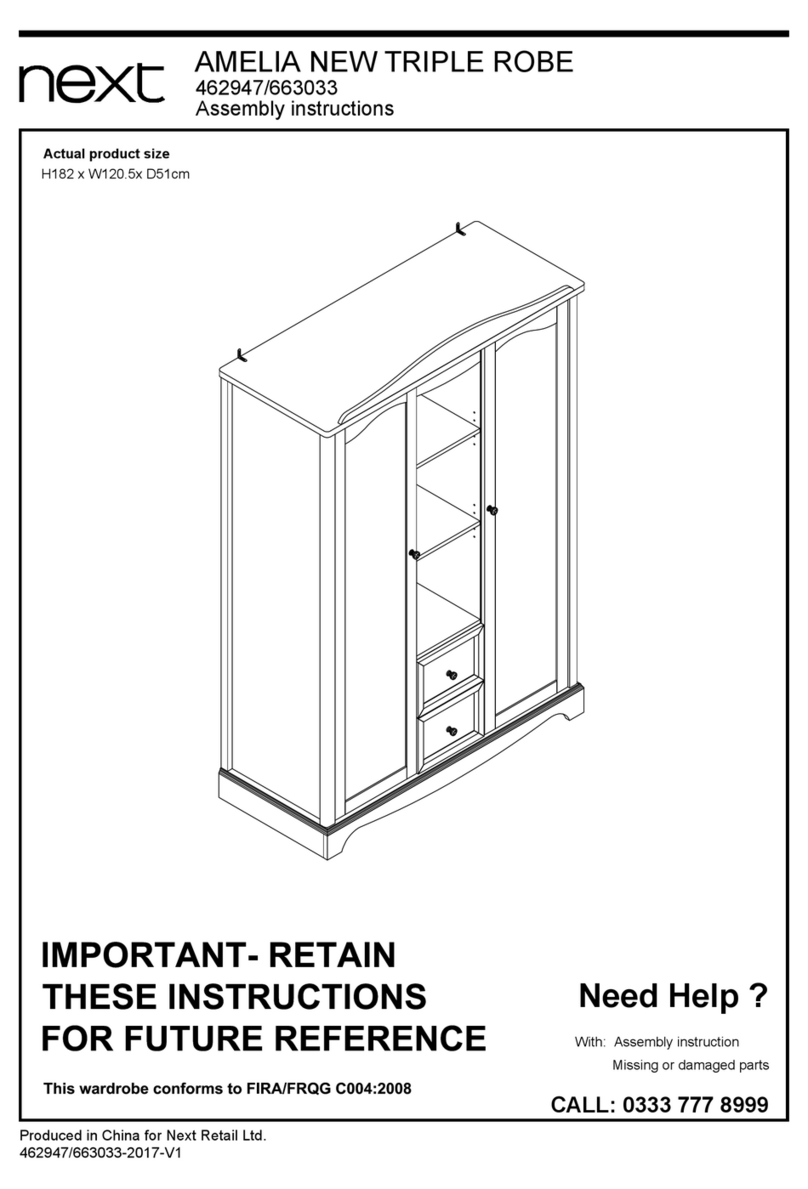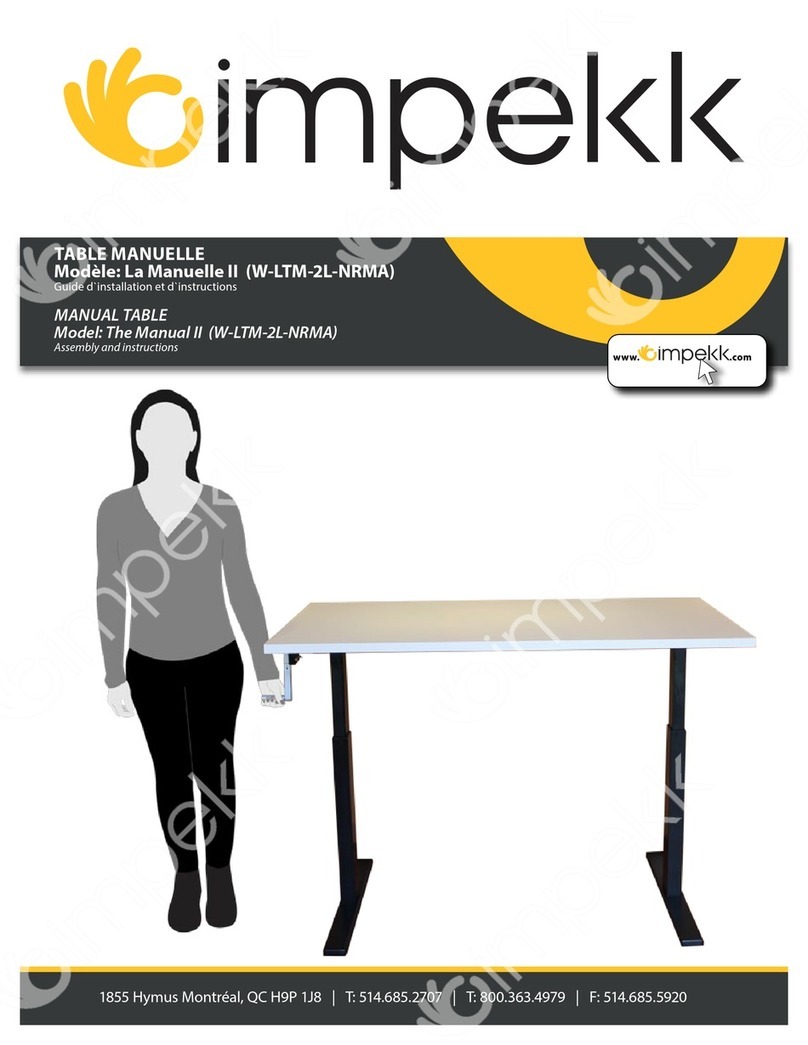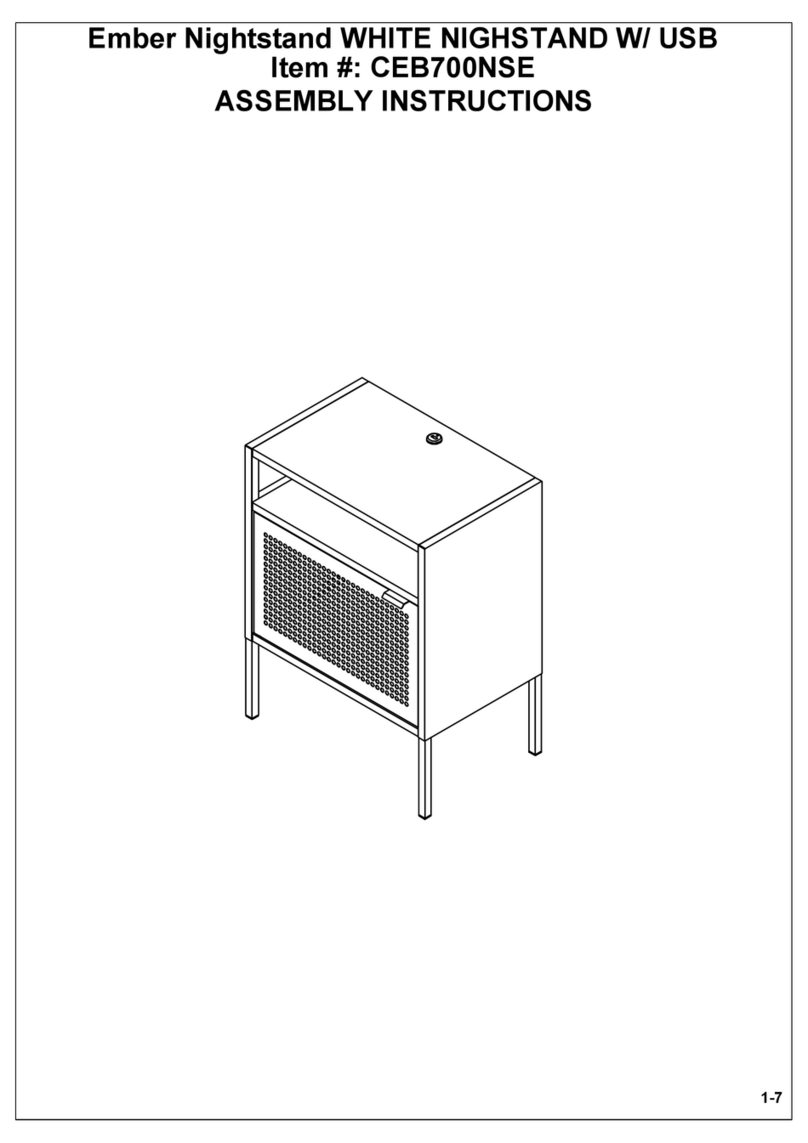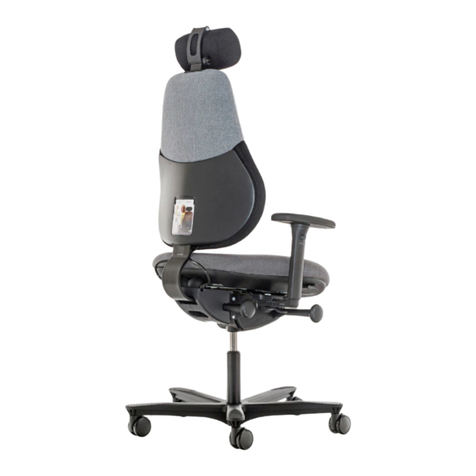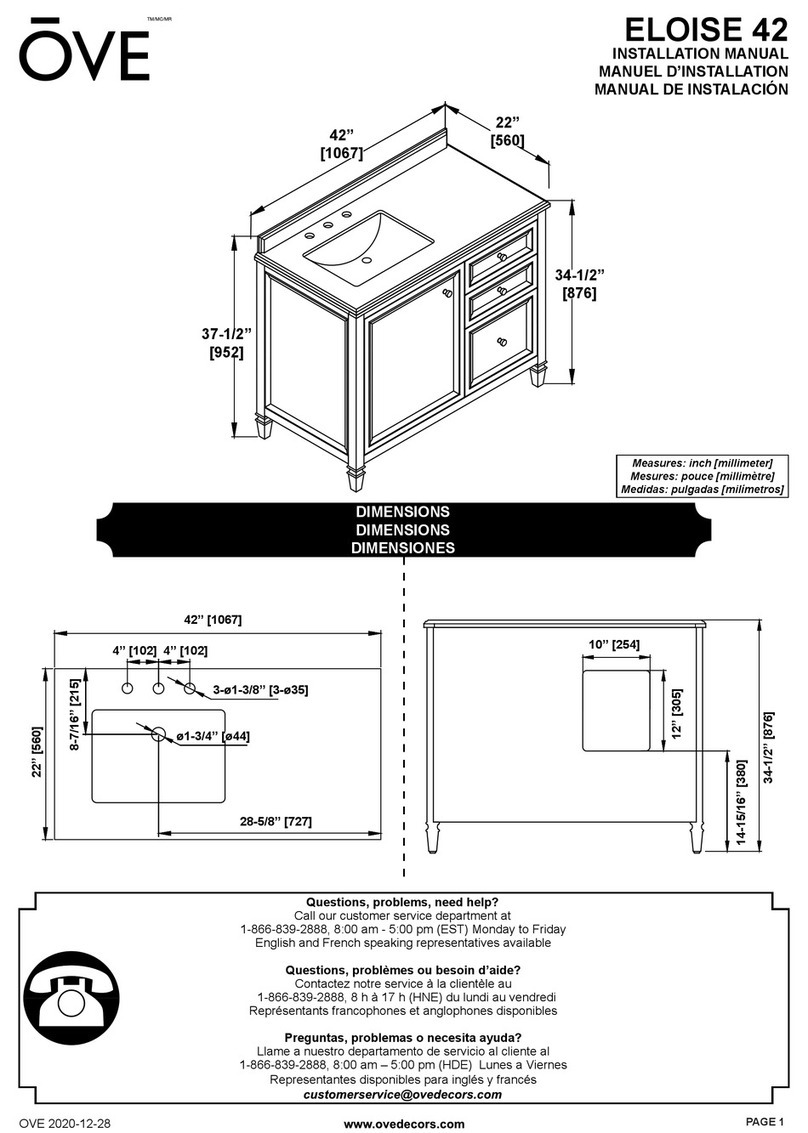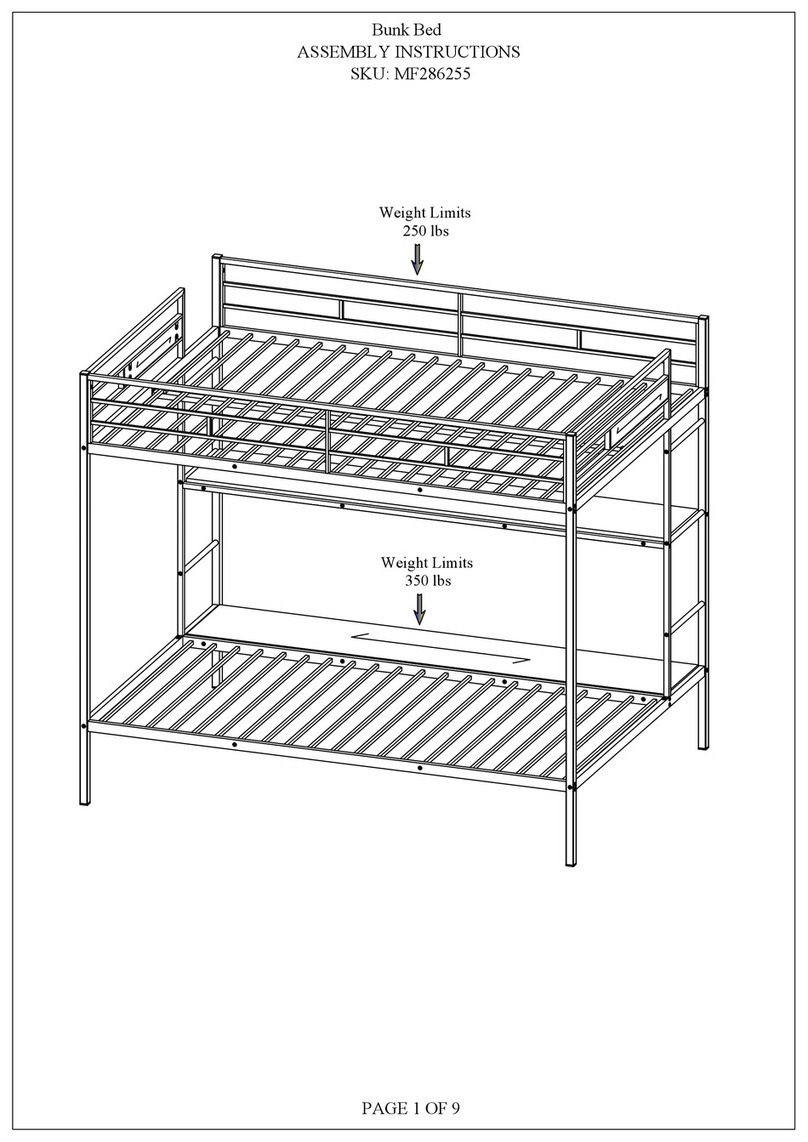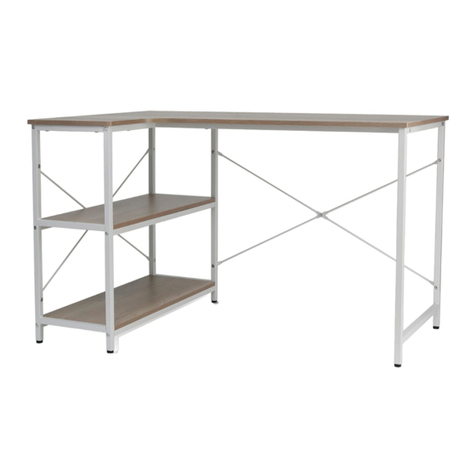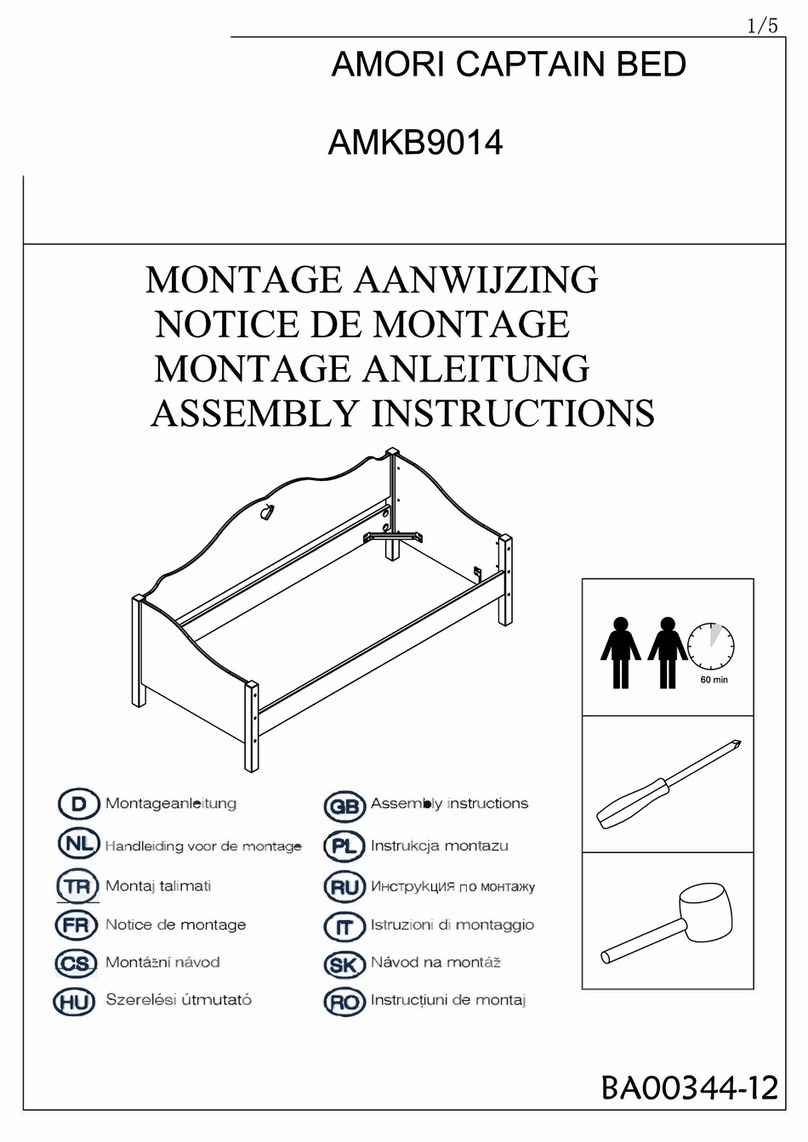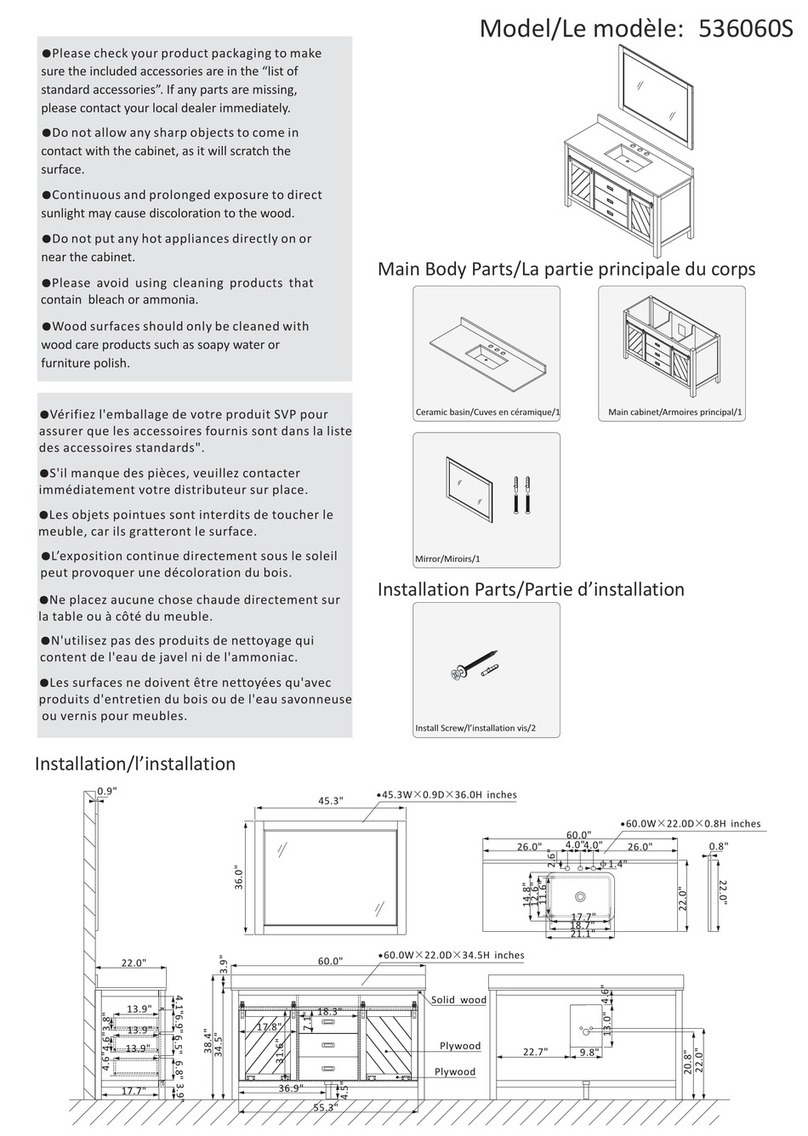
• If exterior is wood, dust regularly with a slightly damp
soft lint-free cloth. Wipe dry with a dry soft cloth in
the direction of the wood grain. Once per month, it is
recommended to clean the surface with a quality, water-
based cleaner formulated for wood furniture. Wipe the
surface to remove dirt and fingerprints and then wipe
dry with a clean dry cloth. For minor scuff repair, a repair
kit is available for purchase through ONETWOSIX Design
Inc. For deeper scratches, it is recommended to contact a
professional furniture re-finisher.
• Clean glass with mild, non-abrasive interior glass cleaning
solution, such as Windex® and wipe with a clean non-
abrasive cotton cloth.
• If back panel is cork, avoid picking. If necessary for
maintenance, vacuum with a soft brush attachment.
• If back panel is felt, the cleaning approach should be (1)
dust with a lint roller, (2) vacuum with a clean, soft brush,
(3) clean with water and mild detergent, (4) clean with
chemical spot remover. Always test any cleaning method
first in an inconspicuous area. Wool has a low degree of
dry soil pick-up compared with other fibers. However,
to remove the accumulation of general airborne debris,
wool felt may be cleaned with a standard masking tape
lint roller. It is always a good idea to use the lint roller first
in any area intended to be spot cleaned. Once per year,
it is recommended that the entire surface is given a light
vacuum with a clean, soft horsehair upholstery brush.
In a clean office environment, it may not be necessary
to do this annually. Please note that slight shedding of
wool fibers is normal and not indicative of any defect.
These loosened fibers are easily vacuumed away and
will decrease over time. If a wet spill should occur, blot up
the liquid as soon as possible with a dry cloth to avoid
absorption. Avoid aggressive rubbing as this can continue
the felting process and change the surface appearance
of the felt. For removal of minor stains, if the felt can be
removed it is best to obtain the services of a professional
dry cleaning company that is familiar with the special care
of wool. If not possible, a mild enzyme-based detergent
(such as Tide Free) is recommended. Create a dilute
solution by adding three parts water to one part detergent
in a clean container. Use a clean paper towel to gently blot
the detergent into the stain. Press and release, press and
release. Using a separate container of just clear water,
use clean, moist paper towels to blot more water into
the stain. Press and release, press and release. Finish by
User Maintenance Instructions
blotting firmly with clean, dry paper towels until the area is
nearly dry. There are many solvent-based spot removers
available. Although they are not recommended except in
the case of emergency, the best choices for wool felt are
dry cleaning fluids. Be sure to test in an inconspicuous area
first. Blot the stained area with a clean cloth soaked in dry
cleaning fluid, then blot with a clean cloth until dry.
• Clean interior laminate (and exterior laminate) using a
clean, damp, non-abrasive cotton cloth and a mild liquid
detergent or household cleaner. Do not flood the laminate,
especially near seams, since water can penetrate and
cause the substrate to swell. Dry the surface with a soft,
clean, non-abrasive cotton cloth. Do not use abrasive
pads, scouring pads, or chemical cleaners as they may
permanently dull and scratch the laminate surface making
it susceptible to staining. Never use cleaners containing
acid, alkali, or sodium hypochlorite. These cleaners will
mar, etch, corrode, and permanently discolor the laminate
surface. Also, make sure that bottles, rags, and other
materials contaminated with these cleaners never contact
the laminate surface. Accidental spills or splatters from
these compounds should be wiped off immediately,
and the area rinsed thoroughly with water. Examples of
cleaners containing acid, alkali, or sodium hypochlorite
include, but are not limited to: ceramic cooktop cleaners,
oven cleaners, chlorine bleach, rust removers, coffeepot
cleaners, some countertop cleaners, drain cleaners, some
disinfectants, lime scale removers, toilet bowl cleaners,
metal cleaners, and tub / tile cleaners. To remove or
minimize stains, use full strength Fantastik® All Purpose
Cleaner, Formula 409®, Pine-Sol® (original formulation)
or other mild household cleaner on the affected area,
and allow it to draw out the stain. Blot with a clean,
damp, non-abrasive cotton cloth, and then rinse with
clean water. When a recommended cleaner changes its
formulation, the change may be harmful to the laminate
surface. We cannot be held responsible for these changes.
Solvents such as denatured alcohol can also be used.
Follow all directions and warnings on the solvent label
because many are extremely flammable.
• If your booth includes a white board, clean regularly with
a sponge eraser or clean non-abrasive cotton cloth. For a
deep clean, spray a clean non-abrasive cotton cloth with
a non-abrasive interior glass cleaning solution, such as
Windex® and wipe dry.
EXTERIOR & INTERIOR

